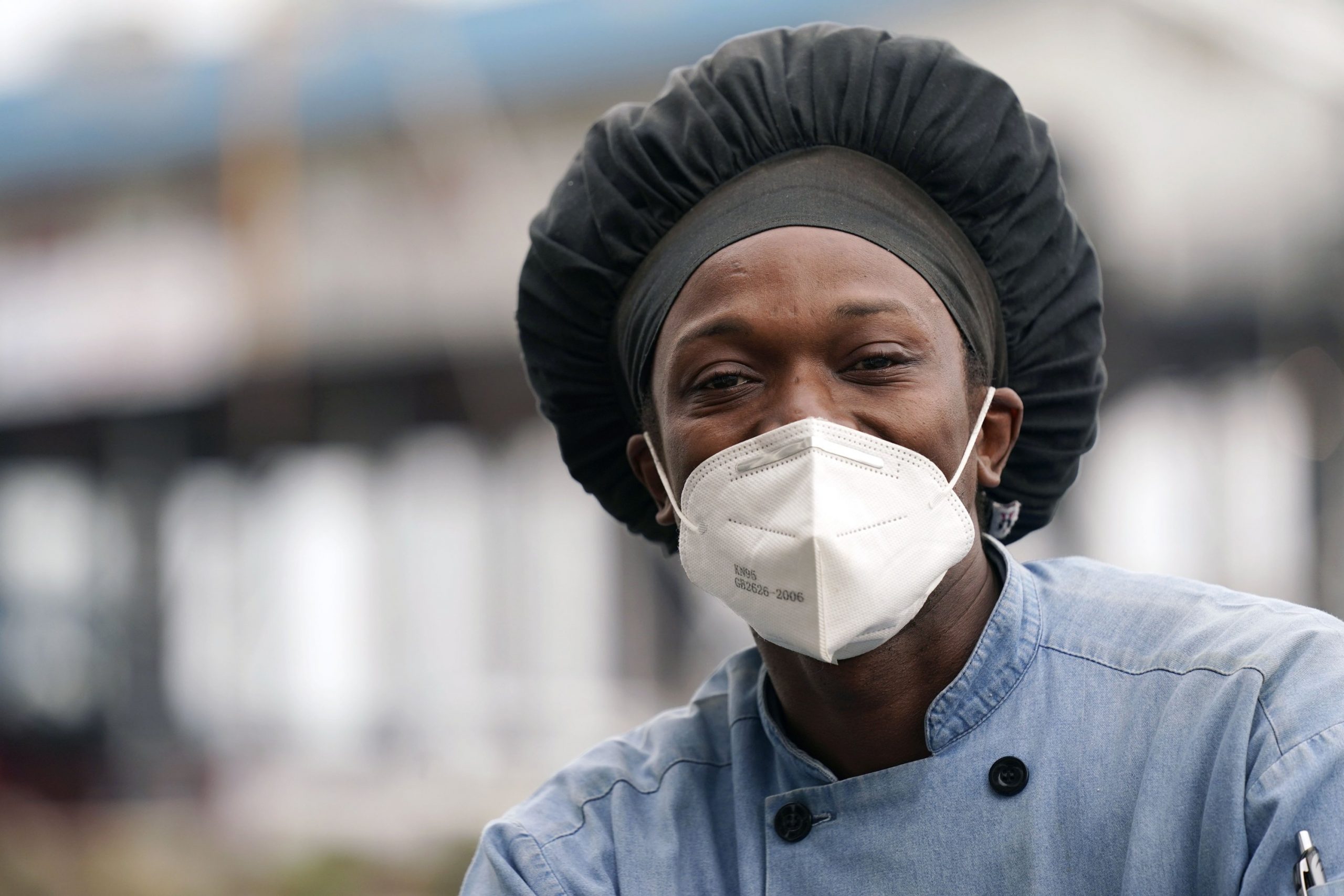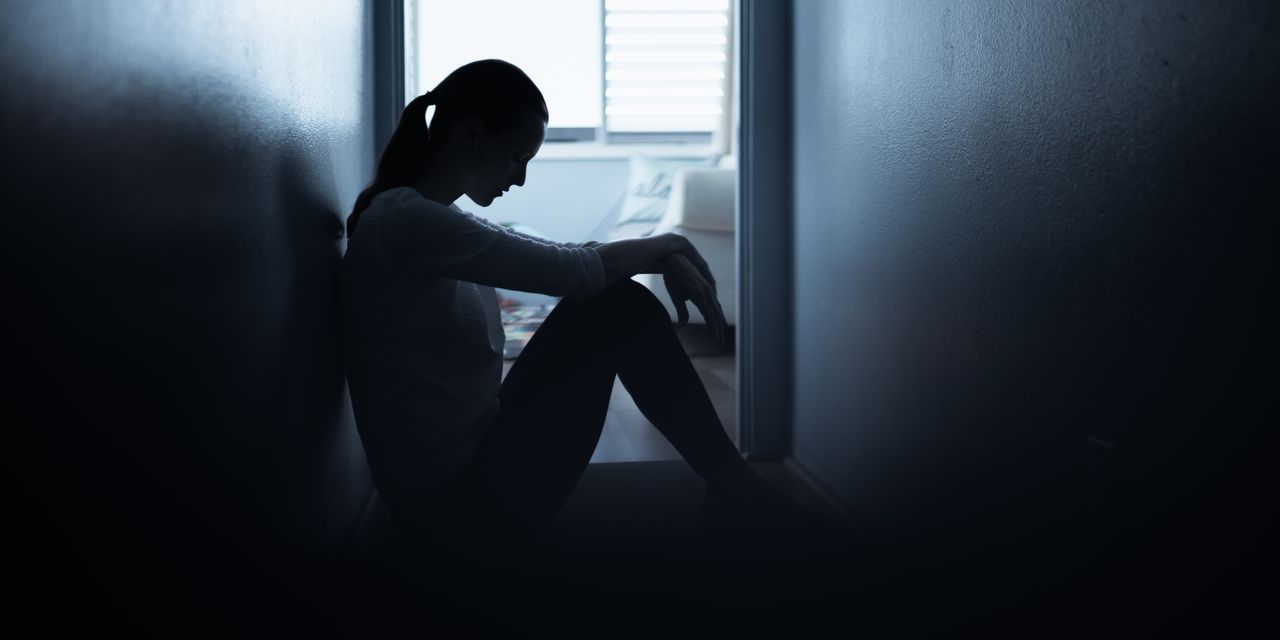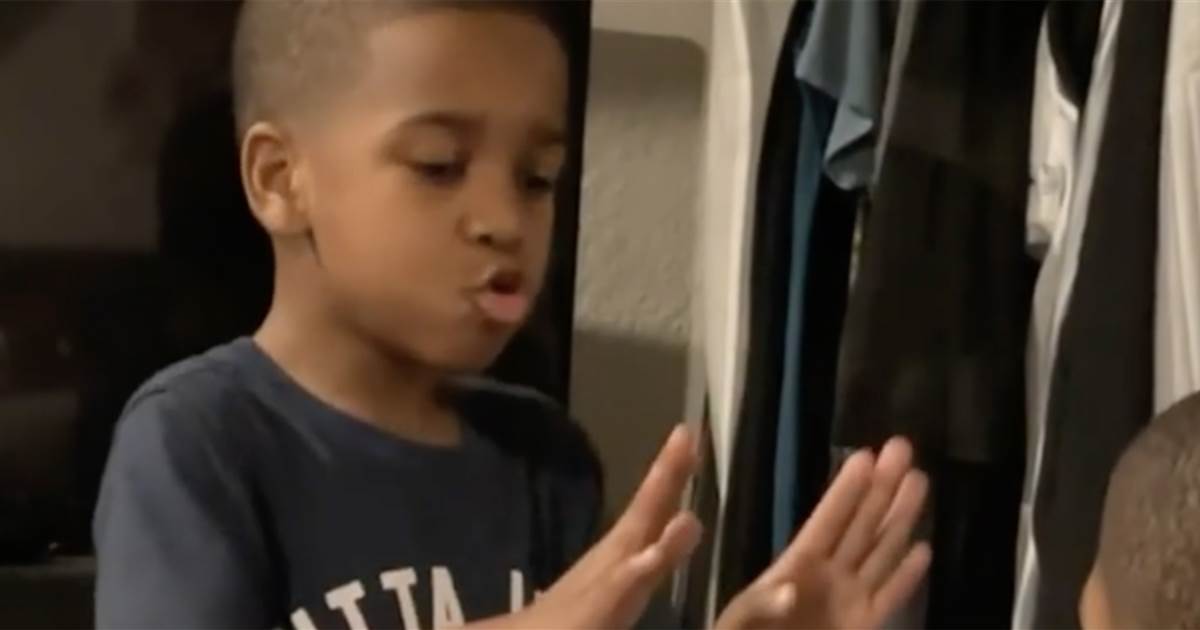7:00 AM ET
-
Emily KaplanESPN
Close
Emily Kaplan is ESPN’s national NHL reporter.
Close
Emily Kaplan is ESPN’s national NHL reporter.
“Nobody knows what I’ve been doing since I left the game,” Theo Fleury says. “Everyone thinks I’m still this crazy person with problems and issues, but I’ve actually been trying to figure it out.”
Fleury last played in the NHL in 2003; he was suspended by the league for violating its substance abuse aftercare program, and never returned afterward. The winger, a 1,000-point scorer and Stanley Cup champion, previously entered the program voluntarily in 2001, seeking treatment for addiction.
Fleury, then with the Blackhawks, said he was approached by those around him, saying they heard rumors that he was struggling with abuse of drugs and alcohol. “There were tons of people wanting to help, but I wasn’t ready for the help,” Fleury said. “That’s part of the equation too. Ultimately, every time I went to treatment, I was saving my job, saving my marriage, doing it for everyone but myself.”
Fleury went to four different treatment centers, at four stages of the program. “I’ve never followed a rule in my life, so I’m not surprised I blew through four stages then got kicked out,” he said. “But I’ll tell you, at every treatment center I picked up tools that I use today to stay clean and sober.”
He continues: “I should have gone away for a whole entire year, worked on myself, got my s— together, and came back,” Fleury says. “I probably would have had eight or nine years playing if I had done that. But I didn’t. And we don’t know what we don’t know, right?”
Fleury’s addiction, he says, was a coping mechanism for managing his mental health. And that all stems back to trauma — Fleury revealed in his 2009 book that he was sexually abused by his junior coach — which is a lot to unpack. He’s still in that process, but now takes an enlightened and active role on the journey. What he’s learned? “I believe mental health is the biggest epidemic on the planet,” Fleury says. “We’ve never seen anything like it.”
Fleury, now 52 and living in Calgary, has been connected with other like-minded individuals, and has immersed himself into the mental health space.
“I get to hang around with neuroscientists and all types of amazing people who are smart,” Fleury says. “And they’re on speed-dial so I can have a conversation with them whenever I want.”
Editor’s Picks
That has led Fleury to pursue business ventures, which ultimately could help others. He just joined a virtual reality company, XR Medical Solutions, which uses sound to recalibrate the nervous system and create new pathways. Fleury is also sitting on the advisory board for Universal Ibogaine, a Canadian company working to combat the opioid epidemic through plant-based medicine. They’re currently doing trials in Mexico on Iboga, a root that grows in Africa.
“What it does is completely bypasses the detox off of opioids,” Fleury says. “A lot of people don’t want to get off opioids just for that fact. Because detox can be an exorcism. So this drug would help you bypass all of that, which would really help people’s recoveries.”
This month, Fleury is excited to launch a podcast entitled “We’re All A Little Crazy.” The co-hosts are Eric Kussin, the founder of #SameHere (the nonprofit Robin Lehner has supported, including on his helmet) and Darren Rovell, the former ESPN business reporter who now works at the Action Network.
Kussin said the podcast will focus conversations around current events — and how the media’s coverage of mental health can often be more damaging than helpful, especially if it doesn’t explain mental health in a larger context, or how things are interrelated. That’s why Fleury saw the need for a long-form format.
“There’s not enough men who are openly talking about their struggles with mental health, because of stigma,” Fleury says. “Just as many men suffer as women, but in my experience there’s really not a space created to have these conversations. We’re going to try to normalize how people should talk about the subject. Because there’s so much stigma. If you have mental health challenges, guess what? You’re in the majority, you’re not in the minority.”
The landscape in the NHL is reflective of society’s relationship with mental health, Fleury says. While there have been great strides with awareness about mental health, there are still “a ways to go” to better support players.
“Awareness about mental health is the only thing I see that’s different,” Fleury says. “Awareness, that’s it.”
Fleury uses the Flames, the team for whom he played 791 games, as an example.
“Calgary has a program called ‘Hockey Talks,'” Fleury says. “And it’s like, what are you guys actually talking about? They say, mental health. Well, what is mental health? What are you actually talking about? There are 30 layers to treating mental illness, and talking is one of the 30. That’s it. They use it as a way to get eyeballs and clicks and all that stuff. ‘Bell Let’s Talk’ in Canada, it gets 150 million impressions a year in one day. It’s good for business. What they’ve done is they created an incredible amount of awareness around the subject, but that’s it. So the awareness is there. But on the other side of the coin, we are seeing the highest suicide rates ever on our planet. So why isn’t all of this awareness turning into action and getting people well? Because we’re not talking about trauma. Trauma is the catalyst for all of this stuff.”
It’s one of the reasons launching the podcast now was important to Fleury.
“COVID is the most traumatic thing we’ve seen since World War II,” Fleury says. “Why are we seeing a higher rate of suicides? Why are we seeing a higher rate of overdoses and deaths? Because people are using that for a coping mechanism. And then when people lose hope — because we all don’t know when this will be over and return to some sort of normalcy — the whole entire world is living in high anxiety because we don’t know what’s going on. And then you’re isolated. The best way to deal with that is through connections and relationships, and we don’t even have that. We have Zoom screens.”
Talking it through, Fleury hopes, will help others realize they’re not alone.
A team turning plenty of heads this season is the Florida Panthers; at 13-4-3, they are neck-and-neck with the defending Stanley Cup champion Lightning for the Central Division lead. The question everyone in the NHL is asking: Are the Panthers for real?
“I think if you would have told me before the season started, without watching our group, here’s what the record would be after [20] games that we’d have 29 points, I’d say, ‘Wow!'” Florida general manager Bill Zito told me this weekend. “But then when you watch the games, the guys have played really well.”
NHL.TV is back for 2021!
NHL hockey is back! Get the 2021 All-Access Pass to stream out-of-market games for only $99.99. Click here to learn more »
Florida’s offense looks legit; for the second straight season, Florida is tracking as a top-10 team in goals per game. Zito, the first-year GM, deserves a lot of credit for the players he brought in. Newcomers Anthony Duclair, Patric Hornqvist, Alex Wennberg and Carter Verhaeghe have combined for 52 points. But perhaps just as impressive in Joel Quenneville’s second campaign in Florida is how much he’s getting out of the now-veteran core. The defense looks much improved this season. Aaron Ekblad is playing some of his best hockey in five years in Florida.
Jonathan Huberdeau has surpassed Aleksander Barkov as everyone’s favorite answer for who is the league’s most underrated player. (Huberdeau is on pace for the equivalent of 20.5 GAR over a full season, tied for 15th-best among forwards, according to FiveThirtyEight). As for Barkov himself?
“Sasha, he’s really enjoying hockey,” Zito said. “It’s like you watch him, and he gets the puck, and you can just tell. He’s having fun. His leadership I think has been infectious. That whole leadership group really stepped up. Sasha, and Huby and Yandle. Keith Yandle!”
The 34-year-old defenseman, who was potentially going to be scratched in the season opener (which would have ended his 886-game ironman streak, which ranks third in NHL history) has been a revelation. “I mean, the offensive game for Yandle — he’s blessed, he’s a magician with the puck,” Zito said. “But on the other side of the game, he came out strong and was a leader on the ice.”
The most interesting aspect of Florida is their goaltending. Ahead of the season, the Panthers touted that they had formed a Goaltending Excellence Department. Zito explained the purpose was an integrated department to provide guidance and coaching for goalies from the moment they are drafted to when they reach the NHL. (The Panthers, it should be noted, have one of the league’s top goaltending prospects in 2019 first-rounder Spencer Knight). However, it doesn’t feel like a coincidence that the department was formed, and all of a sudden unheralded 26-year-old Chris Driedger is suddenly playing out of his mind. (Driedger has the sixth-best save percentage, .928, of all goalies who have played at least six games this season).
Zito laughs at this notion. “I think that would be self-serving to just say we snapped our fingers to get that result,” Zito said. “You’ve got to give some credit to Chris Driedger. And I don’t know, is he playing out of his mind or did he start doing it last year? And he kind of got the chance, and showed what he can do. It’s funny, a lot of goalies, it just seems to happen that they come into their own a little bit later. Some people might say that because nobody gave them the chance earlier. … But it does happen where some pretty good goaltenders get their chance later or develop later, and they’re ready for the opportunity.”
Driedger and Sergei Bobrovsky have each made 10 starts, though Driedger has outplayed the 32-year-old who signed a seven-year, $70 million contract ahead of last season. (Bobrovsky has a .899 save percentage so far, and is at minus-2.9 goals saved above average, while Driedger is at 6.33 GSAA, per Evolving Hockey). Asked if he is concerned about Bobrovsky not performing up to expectations, considering how big of an investment the organization has made in the goalie, Zito was emphatic.
“No, no,” he said. “There’s ebbs and flows in our game and we’re a team. We have to worry about day-to-day. We go to work every day as a team. … He’s the consummate professional, the hardest-working guy. As a general manager, he’s a pleasure to have, because he makes everyone around him better with his work ethic, his focus, and his diligence.”
Can the Panthers keep it up? Florida was embarrassed by the way it exited last year’s bubble, losing in four games to the Islanders in the qualifying round. The franchise has made it past the first round of the playoffs just once in the last two decades.
“Consistency is the key — trying to see if we can keep it going,” Zito said. “Can we play the right way, and continue to do what we’re doing?”
It’s not going to be easy for the Panthers, who had a lighter first-half schedule and are one of six teams feasibly in the race for four Central Division playoff spots (assuming the Dallas Stars can right their ship).
“I think fatigue is the thing that is going to creep in here as the season evolves,” Zito said. “Who can manage it as the play gets sloppier and guys get more and more tired and teams figure out how to manage themselves?”
Three stars of the week
The Wild are on a six-game winning streak and the veteran winger has been a catalyst, sparking a red-hot line with Victor Rask and Kirill Kaprizov. Zuccarello had two goals and six assists for eight points in four games this week.
Mats Zuccarello (@zuccarello36) finishes off some pretty passing on this one. pic.twitter.com/KluTjASE4p
— NHL (@NHL)
Vasilevskiy’s new helmet may function like a mood ring, but the vibe has been great all week for the 2019 Vezina Trophy winner. He won all three starts (against the Canes and Stars) including two shutouts, for a .975 save percentage and 0.67 goals-against average.
Wait… what?! 😱
Andrei Vasilevskiy’s new mask changes colors.
(🎨 @Sylabrush) pic.twitter.com/bEt3iEg0xg
— NHL (@NHL)
The 24-year-old is sometimes (um, almost always) under the microscope in a tough media market. Production is the best clapback. Nylander scored three goals in three games this week, including two game-winners.
Willie Nylander calls game pic.twitter.com/mEJ1eI7p3z
— Brady Trettenero (@BradyTrett)
What we liked this week
1. It’s a shame for American hockey fans that Brady and Matthew Tkachuk are both playing for Canadian teams, therefore getting less exposure down here. They’re two of the peskiest — but most electric — players in the league today. As father Keith told NHL.com: “I assume there are going to be a lot of guys in the Ottawa Senators dressing room who aren’t going to like Matthew, and vice versa in the Calgary room about Brady, if they’re doing what they’re supposed to do.”
We’re in the middle of the Tkachuk brothers facing off five times in an 11-game span, which has also generated some incredible content:
These photos of young Matthew & Brady Tkachuk posing with NHL stars are golden.
(📷 @Sportsnet) pic.twitter.com/bHZ9hVG4ny
— NHL (@NHL)
Both brothers scored on Saturday night — a 6-3 win by the Flames — but my favorite moment came as Brady Tkachuk began yapping at Calgary captain Mark Giordano on his way to the box for a tripping penalty. Matthew Tkachuk is seen laughing on the bench, saying: “Give it back to him, G!”
2. Kirill Kaprizov‘s edge work is insane. You see why so many Minnesota Wild general managers were desperate to get this winger over from the KHL (and might we remind you, he was a fifth-round pick). Kaprizov’s arrival has totally changed the complexion of the team; the line of Kaprizov, Victor Rask and Mats Zuccarello is one of the hottest in the league, having outscored teams 9-2 on the ice, with a 60.64 expected goals for percentage, per Natural Stat Trick.
Minnesota has won six in a row, the franchise’s longest winning streak since 2016. Kaprizov, meanwhile, has scored in consecutive games for the first time this season. Four of his six goals so far have come against the Kings, but it’s his vision, creativity and skating that have his teammates most impressed.
“He’s dangerous when he has time and space,” Zach Parise said. “He’s strong on the puck. If we get those scenarios, 3-on-3 or 4-on-4, he could have the puck on his stick for the whole shift.”
Kirill Kaprizov is blowing the minds of opposing team’s commentators pic.twitter.com/qJzsdbdYfc
— Brady Trettenero (@BradyTrett)
3. J.J. Watt already put in the work to speak in hockey language. I wouldn’t mind this as a second act for him, at all.
Clappin an absolute heater up where grandma keeps the good stuff.
Just wish I had the lettuce and lip sweater to match the dangles.
Wouldn’t mind doing a few years on the pond after I hang up the cleats someday.
🥅 https://t.co/pjYBaHYprt
— JJ Watt (@JJWatt)
What we didn’t like this week
1. There are unwritten rules in the NHL. Before making their NHL debut, rookies get a solo lap. Skaters shouldn’t shoot high on their goalie in warm-ups. Nobody should shoot the puck after the whistle, period. In the general managers’ fraternity, offer sheets are frowned upon.
And then there’s the one that’s kind of uncomfortable to talk about: The coach of the Montreal Canadiens must speak French. (A joke I heard from a longtime NHL assistant coach this week: “You don’t have to be bilingual to coach the Habs, you just need to speak French).
The NHL on ESPN+
Catch NHL games streaming live every night (and on replay) this season on ESPN+. Click here for the upcoming schedule and to learn how to subscribe.
It’s a unique market, with about 80% of Quebecers using French as their first language, and previous tenures for English-only speaking coaches have not ended well. Interim coach Randy Cunneyworth was the last (in 2011), and his promotion was met with a firestorm of criticism — including from provincial culture minister, Christine St. Pierre, who said she hoped the Habs would “rectify the situation” but did not call for his firing, saying she was taking the team at their word that Cunneyworth’s job title was temporary.
Claude Julien was fired this week, which isn’t necessarily surprising given the pressure Habs GM Marc Bergevin feels to contend with the moves he made this offseason. I meant this as no disrespect to Dominique Ducharme, but I was surprised to see him get the nod at interim coach over Kirk Muller — a franchise legend himself, a former NHL head coach, and the man tapped to lead the team in the bubble when Julien had to go to the hospital for a heart procedure. Then again, I shouldn’t have really been surprised. Muller doesn’t speak French. Heck, when Muller was announced as interim in August (with Julien in the hospital) Bergevin felt the need to apologize.
“We understand that Kirk does not speak French,” Bergevin told reporters then. “But there are exceptional circumstances, and we’re asking you for your understanding.”
I understand the importance of finding someone who can communicate to their fans and the media in both languages, but I also wonder if the team is limiting itself from finding the most qualified candidate, all because of an arbitrary rule. This league is more international than ever. Its coaching force should, in theory, reflect that.
2. I mean, the whole “goal suppression” thing appears to be an issue in the North Division:
You miss 100% of the shots you don’t take.
– Wayne Gretzky
– Michael Scott
– Erik Brannstrom #GoSensGo pic.twitter.com/w0nfdtU68j
— Ottawa Senators (@Senators)
3. Jordan Binnington got pulled on Saturday night after allowing four goals to the Sharks (the Blues would win, 7-6), and the Blues goalie was quite upset thereafter:
Things get heated as Jordan Binnington exits the game.
TV: FSMW
Stream: FSGO – https://t.co/qLg8tquQ1b#stlblues pic.twitter.com/7wilYqKTIe
— FOX Sports Midwest (@FSMidwest)
Remember, this is the same Binnington who got a penalty for slashing an unsuspecting Ben Bishop during the commercial break of a playoff game in 2019.
It was funny watching completely different reactions. St. Louis seems happy to get behind Binnington’s passions. “Give me 20 Binningtons!” former Blues defenseman and current St. Louis radio host Jamie Rivers tweeted.
Then there’s Binnington’s San Jose counterpart Devan Dubnyk in a postgame interview: “I don’t know why he’s skating around, pretending to punch guys. I told him to get off the ice; he’s 165 pounds, swinging at guys, fake punching guys.”
Top games on tap this week
Note: All times Eastern.
Another round of Connor McDavid vs. Auston Matthews? Don’t mind if we do (provided that Matthews can play after being held out of Saturday’s tilt with Edmonton due to a wrist injury). The Oilers are on a torrid stretch, having lost just twice since Jan. 30 (best record in the NHL in that span). Matthews has been nursing that wrist injury, but it doesn’t seem to be affecting him too much when he plays; the only difference is he’s not being set up as much for one-timers.
Tuesday, March 2: Philadelphia Flyers at Pittsburgh Penguins, 7 p.m.
Ron Hextall was the general manager for the Flyers for nearly four years, building one of the top prospect systems in the league. But he was fired in 2018, and only now is Philly enjoying the work Hextall put in. Now the GM of the Penguins, Hextall faces his former team for the first time. The intrastate rivals have not met since a two-game series to open the season.
Wednesday, March 3: Washington Capitals at Boston Bruins, 7 p.m.
This is the NBC Sports primetime game on Wednesday, the first of a two-game series for these teams. The obvious storyline is Zdeno Chara once again facing the team he captained for 14 seasons. The Caps are getting past some new coach growing pains, and are hoping Ilya Samsonov can return to form after a rough start to the season, including a bout with COVID.
Social media post of the week
A legitimately great question posed here. These photos are stunning:
Why aren’t more hockey photos taken from an overhead angle? These are from Leafs team photographer @mblinch (who captured the famous Kawhi shot) from an overhead camera with a strobe, and they’re like goddamn Renaissance paintings pic.twitter.com/SRJOEWTpkS
— ℳatt (@matttomic)
This content was originally published here.










